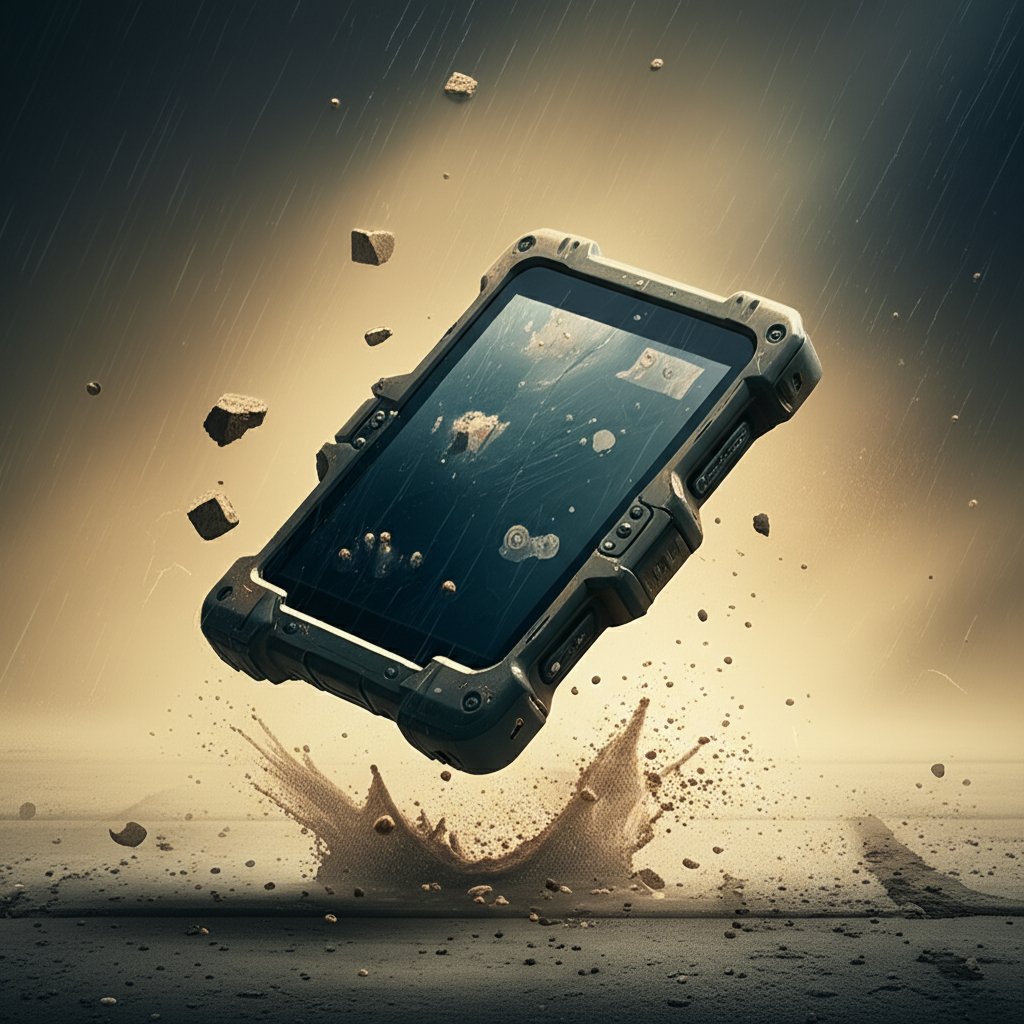
Introduction to Drop Test Standard
When you order a new gadget online or unpack a shipment at work, have you ever wondered how those products survive the bumps, drops, and jolts of their journey? That’s where the concept of a drop test standard comes in. But what is drop test standard exactly—and why should manufacturers and distributors care?
Imagine a smartphone falling from a desk, or a package tumbling off a conveyor belt. Drop test standards are the rules and procedures that define how products and their packaging are tested against real-world drops and impacts. In simple terms, a drop test standard is a set of guidelines that specifies:
- The height and orientation from which an item should be dropped
- The number of drops to be performed
- The type of surface the item lands on
- How to inspect for damage and measure performance after impact
Sounds complex? It’s actually a crucial part of product development and quality assurance. Drop test standards help engineers and manufacturers ensure that products are tough enough to survive not just careful handling, but also those unavoidable accidents during shipping, storage, and everyday use. According to industry experts, drop tests are used across a range of fields, from consumer electronics and medical devices to aerospace and heavy machinery.
Why is this so important? Because a single drop can mean the difference between a satisfied customer and a costly return, or between a safe product and a potential hazard. By following a standardized approach, companies can:
- Identify weak points in product or packaging design
- Meet regulatory and industry requirements
- Reduce warranty claims and shipping damage
- Boost customer confidence and satisfaction
This guide will walk you through everything you need to know about drop test standards, from their technical parameters and industry applications to the specific standards for packaging, electronics, and more. Whether you’re a manufacturer, distributor, or simply interested in how products stay safe from the warehouse to your hands, understanding drop test standards is essential for ensuring quality, reliability, and peace of mind.
The Importance of Standardized Drop Testing in Product and Packaging Validation
Ever received a package with a dented box or a broken item inside? If so, you’ve seen firsthand why drop test standards matter. But what exactly makes a standard drop test so fundamental to modern product and packaging validation?
Why Standardized Drop Testing Is Non-Negotiable
Imagine a product’s journey: from the factory floor, through warehouses, onto delivery trucks, and finally into your hands. At every step, products face the risk of accidental drops, rough handling, and unpredictable impacts. Without a reliable way to simulate these real-world hazards, manufacturers would be left guessing about their products’ durability—and consumers would be left with the consequences.
This is where drop test standards come in. They provide a repeatable, objective way to assess how well a product or its packaging can withstand the rigors of transportation and everyday use. By following these standards, companies don’t just test for the sake of testing—they actively protect their bottom line, reputation, and, most importantly, their customers.
Mitigating Risk: Product Damage, Financial Loss, and Brand Reputation
When a product fails a drop test, it often reveals vulnerabilities that could lead to:
- Product damage—leading to costly returns and replacements
- Financial loss—from shipping claims, warranty costs, and lost sales
- Brand reputation harm—as consumers associate breakage with poor quality
By implementing robust drop test standards, businesses can proactively identify and address these risks before their products ever leave the facility.
Key Benefits of Standardized Drop Testing
So, what do companies and consumers gain from standardized drop testing? Here’s a quick breakdown:
- Reduced shipping damage: Products arrive intact, minimizing costly claims
- Enhanced customer satisfaction: Fewer complaints and higher trust in your brand
- Cost savings: Less waste, fewer returns, and lower warranty expenses
- Regulatory compliance: Meets industry and legal requirements for safety and durability
- Improved product design: Early detection of weak points leads to better, stronger products
For example, expert services specializing in carton drop test standards can help ensure that packaging is up to the task, providing consistent and reliable quality assurance at every stage of production and distribution.
Ultimately, robust drop testing protocols are a cornerstone of proactive quality management. To round out these efforts, consider complementing them with a final quality verification step, such as a Pre-Shipment Inspection, to ensure overall product and packaging readiness before items leave the facility.
As you’ll see in the next section, understanding the technical details—like drop heights and test parameters—can make all the difference in choosing the right standard for your product and industry.

Deciphering Drop Test Standard Parameters and Heights
Ever wondered why some packages survive the roughest journeys while others arrive damaged? The answer often lies in the technical details—especially the drop test standard height and related parameters. But how do you determine the right height, and what else matters when running a drop test? Let’s break down the essentials so you can confidently evaluate your product or packaging’s resilience.
How Is Drop Test Standard Height Determined?
Imagine you’re shipping a lightweight gadget versus a heavy appliance. Should they both be dropped from the same height? Not quite. The drop test standard height is typically determined by several factors:
- Product weight: Heavier items are often dropped from lower heights to simulate realistic handling risks, while lighter products may be dropped from higher points to account for their greater likelihood of being tossed or dropped during transit.
- Product size and shape: Large or oddly shaped items might need special consideration to reflect actual handling scenarios.
- Handling environment: Is your product shipped by air, sea, or land? Each mode can expose it to different drop risks, influencing the chosen height.
- Industry standards and test objectives: Regulatory guidelines or company-specific requirements may set minimum heights for compliance and consistency.
For instance, according to the International Safe Transit Association (ISTA) protocols, drop heights are assigned based on carton weight. Here’s a practical example, inspired by industry best practices:
| Carton Weight (kg) | Drop Test Standard Height (mm) |
|---|---|
| Up to 9 | 760 |
| 9 – 24 | 610 |
| 24 – 45 | 460 |
| Over 45 | 300 |
You’ll notice that as the weight increases, the drop height decreases. This approach helps simulate the real-world risks each package faces during handling and shipping.
Product Drop Test Standard Height vs. General Drop Test Height
So, what’s the difference between product drop test standard height and a general standard? It comes down to the focus of the test:
- Product drop test standard height: This refers to the specific height used when testing the durability of the product itself, often without packaging. It’s tailored to the product’s intended use and likely drop scenarios (for example, a smartphone dropped from pocket height).
- General drop test standard height: This typically applies to the product in its packaging, focusing on transit and shipping risks. Here, the weight and type of packaging play a bigger role in determining the height.
Understanding which standard applies to your situation ensures you’re accurately simulating the risks your product or package will actually face.
Other Critical Drop Test Parameters
Height isn’t the only factor in a robust drop test. To fully assess durability, you’ll need to consider:
- Drop orientation: Most standards require drops on different faces, edges, and corners to mimic real-world impacts.
- Number of drops: A typical carton drop test involves 10 drops—one on the most fragile corner, three on different edges, and six on various faces.
- Impact surface: Usually a hard, flat surface like concrete or steel to ensure consistent results.
- Test sequence: The order in which drops are performed can affect outcomes, especially for fragile goods.
Here’s a quick checklist of common drop test parameters:
- Standard drop height (based on weight or product type)
- Drop orientation (face, edge, corner)
- Number of drops per orientation
- Impact surface material
- Sample condition (with/without packaging)
Related Tests: Drop Weight Impact Test Standard
Beyond traditional drop tests, some industries use the drop weight impact test standard to assess how materials absorb energy from a falling weight. This test is especially relevant for materials or products where impact resistance is critical, such as automotive parts or protective packaging. While similar in concept, the drop weight impact test focuses more on material behavior under sudden force rather than overall package integrity.
By understanding and selecting the right drop test parameters—including the correct drop test standard height—you’ll be better equipped to ensure your products and packaging withstand the unpredictable realities of transit. Next, we’ll dive deeper into how these standards are applied specifically to packaging, so you can keep your goods safe from factory to front door.
Drop Test Standards for Packaging Integrity
When you ship a product across the country or around the world, how can you be sure it will arrive in perfect condition? That’s where packaging drop test standards come into play. Imagine the journey: packages get stacked, tossed, and sometimes dropped from unexpected heights. Without reliable testing, even the most carefully designed box might fail when it matters most.
Why Packaging Drop Test Standards Matter
Think about the last time you received a damaged parcel. Frustrating, right? Now, multiply that experience by hundreds or thousands—those losses add up fast for businesses. Packaging drop test standards are designed to simulate real-world handling and shipping conditions, helping manufacturers and shippers identify weak points before products leave the facility. By following these standards, companies can:
- Reduce the risk of in-transit damage and costly returns
- Enhance customer satisfaction and brand reputation
- Ensure compliance with shipping partners and regulatory requirements
For instance, the International Safe Transit Association (ISTA) and ASTM International set widely recognized protocols that dictate how packaging should be tested. These standards are also referenced by major carriers like UPS, whose own drop test requirements align with industry best practices.
Understanding the Carton Drop Test Standard
One of the most common and critical tests is the Carton Drop Test Standard. This test simulates the impacts a package may experience during shipping and handling. But what does it actually involve? Here’s a breakdown of the typical procedure, based on industry standards such as ASTM D5276 and ISTA 1A:
- Preparation: The product is packaged exactly as it would be for shipment, including all internal cushioning and external markings.
- Determining Drop Height: The height is selected according to the weight of the box, as outlined in the standard. Heavier cartons are dropped from lower heights, while lighter ones face higher drops.
- Drop Orientations: The carton is dropped in a sequence covering:
- One corner (often the most fragile)
- Three different edges
- Six faces (top, bottom, and four sides)
- Conducting the Drops: Each drop is performed onto a hard, flat surface, using either a manual or mechanical method to ensure consistency.
- Inspection: After all drops, the carton and its contents are thoroughly examined for any signs of damage, such as dents, tears, or product breakage.
- Documentation: Results are recorded, noting the condition of both the packaging and the product inside.
According to industry guidance, a standard carton drop test involves ten drops—one on the corner, three on the edges, and six on the faces—mirroring the likely points of impact during transit. If the packaging or product fails at any stage, it signals the need for stronger materials or improved design.
Types of Drops: Flat, Edge, and Corner
Not all drops are created equal. Each orientation tests a different aspect of the packaging’s durability:
- Flat drops check if the box can withstand impacts on its largest surfaces.
- Edge drops simulate the stress of a package landing on its edge, which can cause crushing or splitting.
- Corner drops are often the most severe, targeting the weakest structural points of the carton.
By covering all these angles, the test ensures that your packaging is truly robust—not just in theory, but in practice.
Box Drop Test Standard and UPS Drop Test Standard
While the box drop test standard is often used interchangeably with the carton drop test, both follow similar principles. The UPS drop test standard, for example, is closely aligned with ISTA and ASTM protocols, ensuring that packages meet the carrier’s requirements for safe delivery. Adhering to these standards helps businesses avoid penalties, reduce claims, and keep customers happy.
The Business Value of Specialized Carton Drop Test Standard Assessments
Why invest in specialized assessments? Imagine a scenario: a shipment of electronics arrives damaged, resulting in returns, refunds, and a hit to your reputation. Conducting a carton drop test standard as part of your pre-shipment inspection process can prevent these headaches. By proactively identifying weaknesses, companies can:
- Optimize packaging design and material selection
- Minimize product losses and shipping delays
- Reduce insurance and warranty claims
- Strengthen supply chain reliability
For businesses shipping from high-volume manufacturing hubs, such as China, rigorous carton drop testing is especially crucial. Even a small percentage of damaged goods can translate into significant financial losses. By incorporating standardized drop tests into quality control and pre-shipment inspection protocols, companies can ensure products reach customers intact and maintain a strong market reputation.
As you can see, implementing robust packaging drop test standards is not just about compliance—it’s a proactive strategy for protecting your bottom line and building customer trust. In the next section, we’ll explore how these principles are tailored for the unique challenges of consumer electronics, where durability and reliability are paramount.

Ensuring Durability with Consumer Electronics Drop Tests
Have you ever dropped your phone and held your breath, hoping the screen would survive? If so, you’ve experienced firsthand why drop test standards for consumer electronics are so important. With millions of devices like smartphones, tablets, and laptops in daily use, ensuring they can withstand real-world accidents is a top priority for manufacturers and consumers alike.
What Makes Electronics Drop Testing Unique?
Unlike simple packaging, consumer electronics are packed with delicate components—think circuit boards, batteries, and fragile screens. When these devices hit the ground, even a minor drop can cause anything from cosmetic scratches to total functional failure. That’s why manufacturers rely on rigorous product drop test standards to validate a device’s durability before it reaches your hands.
Industry-accepted standards, such as MIL-STD-810G and IEC 60529, define how devices are dropped (height, angle, surface) and what counts as a passing grade. For example, MIL-STD-810G typically requires devices to survive multiple drops from four feet onto hard surfaces—simulating a fall from chest height. The latest proposals even suggest raising the bar to four feet for all devices and adding water resistance checks, reflecting the growing demand for tougher, more versatile electronics.
Challenges in Testing Consumer Electronics
Sounds straightforward? In reality, drop testing electronics brings unique challenges:
- Internal component vulnerability: Tiny solder joints, connectors, and chips can crack or detach under shock.
- Screen fragility: Glass displays are prone to shattering or developing hairline cracks, even if the rest of the device appears undamaged.
- Batteries: Impact can damage battery cells, leading to reduced lifespan—or, in rare cases, safety hazards.
- Complex assemblies: Devices are tightly packed, so a drop can cause cascading failures across multiple parts.
To address these risks, manufacturers conduct drop tests in controlled environments, using specialized equipment to ensure repeatable results. Devices are dropped from specified heights and orientations, then inspected for both cosmetic and functional damage.
Common Failure Points Identified in Drop Tests
Wondering what typically goes wrong when a device fails a drop test? Here are some of the most common weak spots:
- Cracked or shattered screens
- Loose or broken internal connectors
- Non-functioning buttons or touch sensors
- Battery dislodgment or damage
- Dented or deformed casings
- Audio or camera module misalignment
By systematically identifying these failure points, engineers can make targeted design improvements—like reinforcing corners, upgrading adhesives, or using shock-absorbing materials.
How Product Drop Test Standards Improve Longevity and Satisfaction
So, how do these standards translate into better products for you? Here’s what happens behind the scenes:
- Design optimization: Test results guide engineers in choosing tougher materials, smarter layouts, and better assembly techniques.
- Quality assurance: Only devices that pass the required tests make it to market, reducing the risk of early failures.
- Customer satisfaction: Fewer returns, repairs, and warranty claims mean happier users and stronger brand loyalty.
- Safety and compliance: Meeting global standards ensures devices are safe to use, even after accidental drops.
As technology evolves, so do the standards—becoming more comprehensive and precise to cover the latest device types and use cases (Ascend Tech). For manufacturers, investing in robust drop test protocols isn’t just about passing a checklist. It’s about building trust, reducing costs, and delivering devices that can handle the realities of daily life.
Next, we’ll explore how these principles are even more critical in the medical device sector, where safety and reliability are absolutely non-negotiable.
Medical Device Drop Test Standard Essentials
When you think about medical devices—whether it’s a portable defibrillator, a wearable monitor, or a handheld diagnostic tool—one question stands out: what happens if it’s dropped? In healthcare, a device failure isn’t just inconvenient. It could compromise patient care or even put lives at risk. That’s why medical device drop test standards are so strict and comprehensive.
Why Are Drop Test Standards for Medical Devices So Stringent?
Imagine a nurse rushing through a busy hospital corridor, accidentally knocking a vital device off a cart. The device hits the floor—will it still work? That’s the scenario medical device engineers must anticipate. Regulatory frameworks like IEC 60601-1 require manufacturers to prove that their devices can withstand real-world drops and continue functioning safely and reliably (Creanova).
Unlike consumer electronics, medical devices often operate in demanding environments and must meet rigorous safety, durability, and sterility requirements. A failed drop test can mean more than a broken screen—it can mean compromised treatment, delayed care, or regulatory setbacks.
What Does a Medical Device Drop Test Involve?
The product drop test standard for medical devices is detailed and methodical. Here’s how it typically works, based on IEC 60601-1 and industry best practices (StarFish Medical):
- Device classification: The standard applies to portable, body-worn, and handheld medical electrical equipment, as well as portable parts of larger devices.
- Drop height: Most portable devices are dropped from 1 meter onto a hard surface (often a 50mm hardwood board on concrete). Heavier or non-handheld devices may have lower drop heights, typically between 2 and 5 cm, depending on their mass.
- Drop orientations: Devices are dropped in multiple orientations—such as upright, on their side, and upside down—to simulate realistic accidents.
- Number of drops: Each orientation is tested, usually requiring three drops per orientation.
- Post-drop inspection: After each drop, the device is carefully examined for visible damage, sharp edges, or broken parts. More importantly, it’s tested for continued functionality and essential performance.
But the process doesn’t end there. Devices that pass the initial drop tests often undergo additional evaluations, such as ingress protection (IP) tests for dust and water resistance, dielectric strength, and leakage current checks. All these steps are designed to ensure that the device remains safe, sterile, and effective even after impact.
Key Considerations in Medical Device Drop Testing
Wondering what engineers and regulators focus on most during drop testing? Here’s a checklist of critical factors:
- Sterility: Can the device maintain a sterile barrier after impact, especially for surgical or implantable equipment?
- Functional integrity: Does the device still operate as intended? Are there any hidden failures that could affect patient safety?
- Structural soundness: Are there cracks, sharp edges, or deformations that could pose hazards?
- Regulatory compliance: Does the device meet the requirements of IEC 60601-1 or other applicable standards needed for CE marking or FDA approval?
- Design iteration: If a prototype fails, is the design revised and retested until it passes?
Many manufacturers perform these tests in-house during the development phase to catch issues early, saving time and money before formal third-party certification (Creanova). This iterative approach helps ensure that, by the time the device is submitted for official testing, it stands a strong chance of passing on the first try.
The Broader Impact: Safety, Reliability, and Market Access
Ultimately, adhering to the medical device drop test standard is about much more than passing a checklist. It’s about making sure life-saving equipment performs as expected in the real world. These standards help manufacturers:
- Reduce the risk of product recalls or liability claims
- Build trust with healthcare professionals and patients
- Streamline regulatory approval and speed up time to market
- Deliver devices that can withstand the unpredictable realities of clinical and home use
As you move forward, understanding and applying the right product drop test standard for your device is not just a regulatory hurdle—it’s a vital step in safeguarding patient outcomes and upholding your brand’s reputation. Next, let’s see how international standards like ISO help unify these requirements across global markets.
A Look at ISO Drop Test Standard Guidelines
When you’re shipping products across borders, how do you make sure everyone—from manufacturers to logistics partners—speaks the same language about quality? That’s where ISO drop test standards step in. But what exactly is a drop test standard ISO, and why does it matter for your business?
Why ISO Drop Test Standards Matter
Imagine trying to sell your product in different countries—each with its own rules for testing packaging or devices. Without a common standard, confusion and costly delays are almost inevitable. ISO, or the International Organization for Standardization, creates globally recognized benchmarks that help unify expectations for safety, durability, and performance. Adopting these standards means your product is tested in a way that’s understood and accepted worldwide, smoothing your path to international markets.
Key ISO Drop Test Standards You Should Know
Not sure which ISO guidelines apply to your product or packaging? Here are some of the most important ones used across industries:
- ISO 2248: Packaging – Complete, Filled Transport Package – Vertical Impact Test. This standard outlines a method for assessing the resistance of filled packages to vertical impact by free fall. It’s a widely referenced protocol for simulating accidental drops during handling and transport (Pacorr).
Let’s break down what ISO 2248 covers:
- Test Objective: Evaluate how a package withstands vertical impacts, either as a standalone assessment or as part of a broader distribution test series.
- Test Methodology: Involves dropping a filled package from a specified height—based on its weight and anticipated transport risks—multiple times to assess resistance to repeated impacts.
- Result Evaluation: After testing, the package is examined for damage such as cracks, deformations, or compromised protection of the contents (Metropack).
While ISO 2248 is the primary global reference for packaging drop tests, other ISO standards may be relevant depending on your product type and industry. For example, electronics and medical devices may reference additional ISO or IEC (International Electrotechnical Commission) guidelines to address specific durability or safety concerns.
How ISO Drop Test Standards Support International Trade
Still wondering why so many companies turn to ISO drop test standards? Here’s how these standards benefit businesses operating on a global scale:
- Consistency: Provides a universal testing method, making it easier to compare results and meet regulatory requirements across different countries.
- Market Access: Products tested to ISO standards are more likely to be accepted by customs and regulatory agencies worldwide, reducing barriers to entry.
- Customer Trust: Certification to ISO standards signals a commitment to quality and safety, building confidence with buyers and end users.
- Efficiency: Standardized methods streamline testing and documentation, saving time and reducing errors during the certification process.
Beyond ISO: The Role of IEC Drop Test Standards
It’s worth noting that other international standards complement ISO guidelines. For example, the IEC 60068 series covers environmental testing—including drop, shock, and vibration—for electrical and electronic equipment (C&T Solution). Manufacturers of high-tech or industrial products often reference both ISO and IEC standards to ensure comprehensive durability assessments.
By leveraging ISO drop test standards and related international protocols, you can confidently demonstrate that your products meet the rigorous demands of global supply chains. In the next section, we’ll explore how ASTM standards further shape the landscape of product and packaging durability testing.
How ASTM Drop Test Standards Shape Product Testing Across Industries
Ever wondered how manufacturers can be sure their products or packaging will survive the bumps and knocks of real-world use? That’s where ASTM drop test standards come into play. But what makes ASTM standards so widely trusted, and how do they influence the way products are designed, tested, and delivered?
What Are ASTM Drop Test Standards?
ASTM International (formerly the American Society for Testing and Materials) is a globally recognized organization that develops technical standards for a vast range of materials, products, systems, and services. When it comes to durability and impact resistance, ASTM’s drop test standards offer a clear, repeatable way to evaluate how well products and their packaging withstand drops, shocks, and impacts during shipping and handling.
These standards aren’t just for packaging—they’re also used for metals, plastics, composites, foam materials, and finished goods across industries like automotive, electronics, construction, and consumer goods. By following ASTM protocols, companies can ensure their products meet rigorous safety and quality benchmarks before they ever reach the customer.
Common ASTM Standards for Drop Testing
Not sure which ASTM test might apply to your product? Here’s a quick overview of the most widely used ASTM drop test standards for packaging and materials:
- ASTM D5276: Standard Test Method for Drop Test of Loaded Containers by Free Fall. This is the industry’s go-to for simulating manual handling drops of filled packages.
- ASTM D880: Standard Test Method for Impact Testing for Shipping Containers and Systems. Focuses on simulating mechanical handling impacts.
- ASTM D7386: Standard Practice for Performance Testing of Packages for Single Parcel Delivery Systems. Especially relevant for e-commerce and direct-to-consumer shipping.
- ASTM D4169: Standard Practice for Performance Testing of Shipping Containers and Systems. Provides a comprehensive simulation of the entire transportation environment, including drops, vibrations, and compression.
- ASTM D5487: Standard Test Method for Simulated Drop of Loaded Containers by Shock Machines. Used for large or heavy containers not suited to manual drop tests.
- ASTM D6344: Standard Test Method for Concentrated Impacts to Transport Packages. Evaluates resistance to localized impacts, such as sharp blows from a corner or edge.
- ASTM D7136: Standard Test Method for Drop Weight Impact Resistance of Plastics. Frequently cited for foam and composite materials in automotive, aerospace, and packaging applications (Advanses).
How ASTM Methods Are Applied in Practice
Imagine you’re developing a new packaging solution for a fragile product. Using ASTM D5276, you’d follow a standardized procedure: prepare the package as it would be shipped, drop it from a specified height and orientation, then inspect for damage. This repeatable method allows you to pinpoint weaknesses, compare packaging options, and confidently validate your design. For materials like foam or plastic, a drop weight impact test standard such as ASTM D7136 provides real-time data on force, energy absorption, and deformation, helping engineers select the best materials for shock protection.
Why does this matter? Because consistent, repeatable testing ensures that results are meaningful and comparable across different products, suppliers, and even countries. It also supports quality control, product development, and regulatory compliance—all critical for building customer trust and avoiding costly failures.
The Process of Developing and Updating ASTM Standards
ASTM standards aren’t static—they evolve with new technologies, materials, and industry needs. The development process involves technical committees made up of experts from industry, academia, and government. These committees review data, propose updates, and vote on changes to ensure each standard remains relevant and effective. As new shipping methods, packaging materials, and product types emerge, ASTM adapts its protocols to address fresh challenges in durability and safety.
Benefits of Using ASTM-Compliant Drop Test Equipment
To ensure accurate results, drop test machines designed for ASTM standards offer:
- Precision: Control over drop height, velocity, and impact force for consistent outcomes
- Safety: Engineered to prevent accidents or equipment failures during testing
- Flexibility: Configurable for a range of sizes, weights, and materials
- Repeatability: Programmed to deliver identical test conditions for reliable quality control
By leveraging ASTM drop test standards and the right equipment, manufacturers can confidently validate their products and packaging, reduce risks, and streamline their path to market. Next, let’s see how even more demanding requirements come into play with military-grade drop test protocols.

Meeting Rigorous Military Drop Test Standards
Ever wondered what it takes for military equipment to survive the world’s toughest environments? That’s where the drop test military standard—most notably MIL-STD-810—comes in. But what makes these tests so demanding, and why are they a gold standard for ruggedness across industries?
The Context: Why Military Drop Test Standards Are So Severe
Imagine a military-grade tablet or communication device being deployed in the field. It could be dropped in a desert, on a frozen tarmac, or even during a downpour. The MIL-STD-810 standard was developed by the U.S. Department of Defense to ensure equipment can withstand such unpredictable, harsh conditions. Unlike typical commercial tests, MIL-STD-810 doesn’t just check for accidental drops—it simulates the extreme realities of military operations, from the battlefield to remote deployments.
What sets this standard apart? It’s not a one-size-fits-all checklist. Instead, MIL-STD-810 is designed to be tailored: engineers select and adapt test methods based on the actual environments a product will face throughout its service life. This means the standard covers a wide range of stressors, not just simple falls.
What Does the Drop Test Military Standard Involve?
The drop test itself is just one part of MIL-STD-810’s comprehensive suite of environmental tests. For example, the widely referenced Method 516 (shock) requires devices to survive multiple drops from specific heights—typically four to five feet—onto hard surfaces like concrete-backed steel, simulating real-world impacts during handling, transport, or field use (Estone Technology).
But the real challenge comes from pairing drop tests with other environmental factors. Here are some typical conditions considered during MIL-STD-810 testing:
- Temperature extremes: High heat, freezing cold, and rapid temperature changes
- Humidity: Sustained exposure to high moisture and condensation
- Sand and dust: Simulating desert or dusty environments
- Rain: Including wind-driven rain and freezing rain scenarios
- Altitude: Low-pressure testing for high-elevation deployment
- Vibration and shock: Repeated impacts, gunfire vibration, and transport jolts
- Corrosive environments: Salt fog for marine or coastal use
During drop testing, devices are often subjected to a series of falls on all faces, edges, and corners—sometimes totaling over two dozen drops per unit. After each impact, the equipment is inspected for both visible damage and continued functionality, ensuring it can still perform its mission-critical role.
Why Are Military Drop Test Standards Among the Most Challenging?
Still curious what makes these standards so tough? Here’s why:
- Real-world focus: Tests are tailored to the actual operational environment, not just generic lab conditions.
- Severity: Drop heights, surfaces, and the number of drops are chosen to push products beyond typical consumer or commercial specs.
- Combined stressors: Drop tests are often conducted alongside other environmental challenges, such as extreme temperatures or humidity, to simulate the worst-case scenarios.
- Performance-based: Passing isn’t just about surviving physically—equipment must remain fully functional after testing.
For example, a military-grade device might be dropped 26 times from five feet, then immediately tested for communications capability or data integrity. If it fails, it’s back to the drawing board for engineers.
Ensuring Operational Reliability in the Field
The ultimate goal of the drop test military standard is operational reliability. Equipment that passes MIL-STD-810 is proven to withstand the shocks, drops, and environmental extremes of real military service. This not only protects the investment in equipment but—more importantly—ensures mission success and personnel safety.
It’s no surprise that these standards have been adopted beyond the military, influencing the design of ruggedized devices for industrial, emergency response, and outdoor applications. As you move into the final section, you’ll see how understanding and applying the right drop test standard can make all the difference in product performance and reputation—no matter where your products are headed next.

Conclusion
When you think about the journey your product takes—from the factory floor to the customer’s doorstep—it’s easy to overlook the number of bumps, jolts, and drops it might face. But as you’ve discovered throughout this guide, picking and applying the right drop test standard is not just a technical checkbox—it’s a crucial strategy for protecting your products, your customers, and your brand reputation.
Why Every Business Needs a Robust Drop Test Standard
Imagine a scenario: your latest shipment arrives at its destination, but a significant percentage of items are damaged. Not only does this mean costly returns and lost revenue, but it can also erode customer trust and trigger negative reviews. By implementing a well-chosen drop test standard, you’re taking proactive steps to:
- Ensure product quality: Rigorous testing reveals weaknesses before your product ever leaves the facility.
- Protect customer satisfaction: Intact, functional products lead to happier customers and repeat business.
- Reduce financial loss: Fewer damaged goods mean less money spent on replacements, returns, and claims.
- Meet regulatory and industry requirements: Compliance with recognized standards (like ISO, ASTM, or ISTA) opens doors to global markets and avoids costly penalties.
- Build a resilient supply chain: Reliable packaging and product durability keep your operations running smoothly, even under challenging conditions.
As you’ve seen, the right standard isn’t one-size-fits-all. Electronics, medical devices, and industrial equipment each have unique requirements, and even packaging needs specialized approaches like the carton drop test standard to truly safeguard goods in transit.
Assess, Adapt, and Excel: Making Drop Test Standards Work for You
So, how can you put these insights into action? Start by asking a few key questions:
- What are the most common risks my products face during storage, shipping, and use?
- Which industry or regulatory standards apply to my sector or target market?
- Have I tested both my product and its packaging under realistic scenarios?
- Could I benefit from partnering with a professional testing service to ensure objectivity and thoroughness?
By answering these, you’ll be well on your way to choosing the right protocol and achieving consistent, reliable results.
The Value of Specialized Drop Test Services in Quality Assurance
For many businesses—especially those shipping high-value or fragile goods—leveraging a specialized service can provide peace of mind and tangible benefits. For example, a professional assessment like Eagle Eyes Quality Inspection’s Carton Drop Test Standard offers a standardized, repeatable methodology based on globally recognized protocols. This approach helps you:
- Identify and address packaging weaknesses before products reach the market
- Minimize the risk of in-transit damage and costly returns
- Optimize packaging design for both protection and cost efficiency
- Enhance your brand’s reputation for quality and reliability
Imagine the confidence you gain—knowing your products are tested to withstand the rigors of real-world handling, and your customers receive them in perfect condition. That’s the power of a well-implemented drop test standard.
Final Thoughts: Make Drop Test Standards Your Competitive Advantage
In today’s fast-moving, quality-driven marketplace, understanding and applying the right drop test standard is not just about compliance—it’s about building trust, reducing risk, and setting your business apart. Whether you’re refining your own testing protocols or seeking expert help, making drop test standards part of your quality assurance process is a smart investment in your product’s future.
Ready to take the next step? Assess your needs, consult the relevant standards, and consider how a specialized carton drop test standard assessment can elevate your quality control. By doing so, you’ll not only protect your products—you’ll protect your reputation, your bottom line, and your customers’ satisfaction for the long haul.
Frequently Asked Questions About Drop Test Standards
1. What is a normal drop test and why is it important?
A normal drop test simulates real-world impacts by dropping a product or package from a specific height onto a hard surface. This process helps manufacturers identify vulnerabilities, improve design, and ensure that products can withstand typical handling during shipping and daily use. By following established standards, companies reduce damage risk, enhance customer satisfaction, and comply with regulatory requirements.
2. What is the standard height for a drop test?
The standard drop test height varies based on product type, weight, and industry guidelines. For example, IEC standards recommend a 100 cm drop for handheld items up to 2 kg, while military standards such as MIL-STD-810 use a 122 cm drop. Packaging standards often adjust drop heights according to carton weight to reflect realistic shipping scenarios.
3. How do drop test standards for packaging differ from product drop tests?
Packaging drop test standards focus on the integrity of the package and its ability to protect contents during transit, using protocols like ASTM D5276 and ISTA guidelines. Product drop tests, on the other hand, assess the durability of the item itself, often without packaging, to ensure it can survive everyday accidents such as falling from a desk or pocket.
4. Why are military drop test standards considered more rigorous?
Military drop test standards, such as MIL-STD-810, are more demanding because they simulate extreme operational environments. Equipment must withstand multiple drops from significant heights, as well as other stressors like temperature extremes, humidity, and vibration. These tests ensure operational reliability and durability in the harshest conditions.
5. How can specialized drop test services benefit my business?
Specialized services like Eagle Eyes Quality Inspection’s Carton Drop Test Standard use internationally recognized protocols to assess packaging resilience. By identifying weaknesses before shipment, these services help businesses minimize product damage, reduce financial losses, and maintain a strong brand reputation for quality and reliability.



